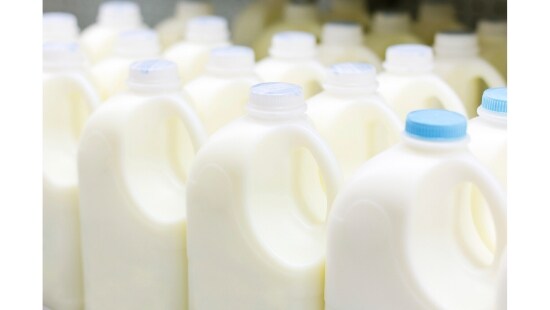When Fighting COVID-19, Know Your Enemy and Focus on the Basics

COVID-19 is new, but most of the cleaning and disinfection practices required to prevent its spread are not. As members of the food and beverage industry, you already know what you need to do. In many cases, your best defense is to focus on the basics.
The pandemic is taking its toll on the U.S. dairy industry. The increase in retail sales to families sheltering at home and buying more milk, ice cream and pizza is not enough to make up for the loss in sales to schools, restaurants and other commercial customers.
Beyond economic challenges, the health risks have understandably put many dairy processors on edge. But the good news is this: When it comes to cleaning and sanitation, proven routines can help you take back a feeling of control. But that doesn’t mean dairy producers don’t have questions.
In partnership with the International Dairy Foods Association (IDFA), Ecolab recently conducted a webinar on cleaning and disinfecting practices for dairy companies facing COVID-19. Here are the key takeaways:
Know your enemy
Understanding the basics about the SARS-CoV-2 virus is the first step toward mitigating risk and easing fears. Let’s start with the more well-known facts:
- What it is. SARS-CoV-2 is part of a large family of coronaviruses (shortened as “CoV”) that cause illnesses ranging from the common cold to more severe diseases such as Middle East Respiratory Syndrome (MERS-CoV) and Severe Acute Respiratory Syndrome (SARS-CoV).
- Signs of infection. Fever, cough, shortness of breath and trouble breathing are all COVID-19 symptoms. People have also reported flu-like symptoms that include general malaise, chills, muscles aches and, in some cases, loss of taste and smell. People who are experiencing any of these symptoms should stay home from work.
- How it spreads. It is believed the virus is primarily spread from person to person when an infected person coughs or sneezes, dispersing infected respiratory droplets into the air. Others become infected as they inhale those droplets or by touching surfaces with the virus on it, and then touching their eyes, nose or mouth before washing their hands.
It also helps to understand some lesser-known facts:
- It is not a living organism. The SARS-CoV-2 virus does not self-replicate on surfaces, it needs a human host. Once it is in a human, it will self-replicate, and then, through the body’s respiratory system, disperse into the environment, where it can infect others.
- Viability varies by surface. Controlled laboratory tests have shown it can survive up to 5 days on doorknobs, 3 days on plastics, 2-3 days on stainless steel, and 24 hours on cardboard. It is detectable in the air for 3 hours. Transmission by surfaces is not considered a primary way of transmission, however.
- It is an “enveloped” virus. That just means it is covered by a protective layer of lipid, or fat. If that lipid layer is broken down, the virus is disabled and no longer a threat to replicate and cause illness. Fortunately, we know how to break down fats very well: cleaning and sanitation do the trick.
- It is not known to transmit via food. Based on what we know today, COVID-19 is a human-safety situation, not a food-safety one. If you want to minimize the risks associated with the virus, you should focus on protecting your people.
Follow proven procedures
We’ve dealt with viruses before, we know what works. These cleaning and sanitation guidelines have always been important, but COVID-19 makes them all that more critical:
- Follow good manufacturing and food safety practices. Make sure employees always follow current Good Manufacturing Practices (cGMPs) and Sanitation Standard Operating Procedures (SSOPs). Best practices are more important than ever. The industry cannot afford a foodborne illness outbreak while dealing with COVID-19.
- Conduct a risk assessment. Remember: No two facilities are the same. Conduct your own internal risk assessment, find the weak spots and systematically address them. This may include increasing the frequency and thoroughness of cleaning and disinfection of high-touch surfaces.
- Use approved sanitizers and disinfectants as per your risk profile and follow label instructions. Many regulatory authorities maintain a searchable list of disinfectants for use against SARS-CoV-2 virus on their websites.
- Coordinate with local and national health officials. They should be your source for timely and accurate information on appropriate responses for each of your locations. Your chemical service provider can help provide guidance on what works.
- Follow proper health and hygiene practices. This includes proper Personal Protective Equipment (PPE) and hand hygiene protocols, which can make a huge difference in the spread of COVID-19.
Finally, stay vigilant.
The COVID-19 outbreak has highlighted the need to clean and sanitize entire facilities, including non-production areas. It has also reinforced the importance of proper hand washing procedures. At Ecolab, we have seen an increased interest in our clean-in-place (CIP) and remote monitoring solutions, which have allowed us to solve customer issues from a distance, protecting their employees and ours.
COVID-19 continues to evolve, so it is important to stay informed. For the most up-to-date information, refer to the CDC, WHO or your local health authority.


